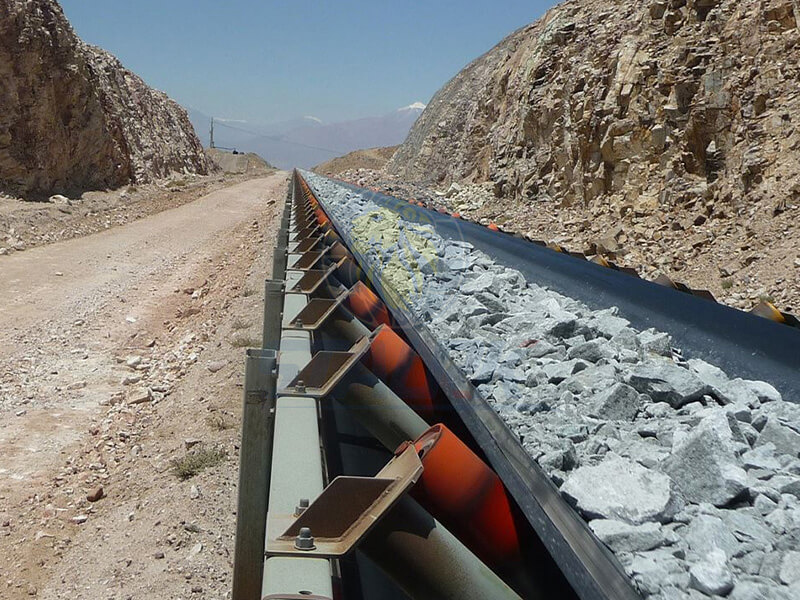Belt Conveyor
Contact
Products Details

Description
Belt conveyor is a machine that transports materials in a continuous manner through frictional drive. It is primarily composed of a frame, conveyor belt, idlers, drum, tensioning device, and transmission device. This machinery can establish a material conveying process along a designated transport route, from the initial feeding point to the final discharge point. It is capable of conveying both bulk materials and individual items. Beyond mere material transportation, it can also integrate with the procedural requirements of various industrial production processes to create a rhythmic flow-line operation.
Features
1.Flexible Combination Methods: can be transported by a single machine or through a combination of multiple machines to form a horizontal or inclined transport system.
2.Efficient Conveying Capacity: capable of long-distance conveying and handling large volumes, meeting the needs of large-scale material transportation.
3.Continuous and Stable Operation: ensuring efficiency and stability in material transportation.
4.Intelligent Control: easy to automate and centralize, enhancing production efficiency and management convenience.
Advantages
1.The operation is reliable.
2.The power consumption is low.
3.The conveying route of the belt conveyor is highly adaptable and flexible. It can efficiently receive materials from one or multiple points and discharge them to multiple points or several sections.
Working Principle
Belt conveyor primarily consists of two end-point drums and a closed-loop conveyor belt tightly fitted around them . The drum that drives the rotation of the conveyor belt is called the drive drum (or transmission drum), while the other drum, which merely changes the direction of the conveyor belt’s movement, is referred to as the bend pulley. The drive drum is powered by an electric motor through a reducer, and the conveyor belt is dragged by the friction between the drive drum and the belt itself.
Application
Belt conveyor can be used for horizontal or inclined transportation, offering great convenience and is widely applied in various modern industrial enterprises, such as underground mine tunnels, surface mine transport systems, open-pit mining sites, and mineral processing plants.
Technical Parameters
Model | Capacity (t/h) | Max. Conveying Distance (m) | Belt Width (mm) | Speed (m/s) | Max. Inclination (°) | Power (kW) | Drum Diameter (mm) | Idler Diameter (mm) |
ZSD500 | 87 | 20 | 500 | 1.0 | <20 | 5.5 | 500 | 89 |
ZSD650 | 127 | 20 | 650 | 1.0 | <20 | 7.5 | 500 | 89 |
ZSD800 | 198 | 15 | 800 | 1.0 | <20 | 7.5 | 630 | 89 |
ZSD1000 | 507 | 20 | 1000 | 1.25 | <20 | 11 | 800 | 108 |
ZSD1200 | 742 | 20 | 1200 | 1.25 | <20 | 15 | 1000 | 108 |
ZSD1400 | 1032 | 30 | 1400 | 1.25 | <20 | 22 | 1000 | 133 |
RT-600 | – | – | – | – | – | – | – | – |
LT40 | – | – | – | 0.33 (20 m/min) | – | – | – | – |
BM 8350 | – | – | – | – | – | – | – | – |